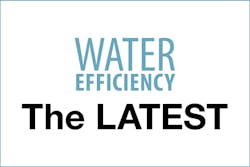Secretary Jewell Directs Continued Work on Crucial Colorado River Basin Water Agreements
US Secretary of the Interior Sally Jewell today issued a Secretarial Order directing the Department of the Interior and its bureaus to continue collaborative efforts to finalize important drought contingency actions designed to reduce the risk of water shortages in the Upper and Lower Colorado River Basins and build on recent progress to complete “Minute 32X” – a long-term Colorado River bi-national cooperative agreement with Mexico.
“I am proud of the tremendous progress we have made over the last eight years to work with our basin states, tribal and Mexican partners to address water resource challenges in the Colorado River Basin,” said Secretary Jewell. “With water from the Colorado River supporting the life and livelihood for an estimated 40 million people, it is absolutely critical for the Department of the Interior to continue to build on this progress and finalize these agreements.”
“The Department of the Interior has worked tirelessly with its partners to come to agreements to ensure that all the basin stakeholders move forward with coordinated plans to address the increasing challenges facing all Colorado River communities,” said Deputy Secretary Michael L. Connor. “This Secretarial Order ensures that Interior will continue to provide essential support for critical actions and paves the way to help carry these important agreements across the finish line.”
The Order describes hydrologic conditions in the basin and ongoing challenges associated with a 17-year period of historic drought and an ongoing deficit of available water compared to demands. Although water stored in reservoirs in the Colorado River Basin has protected the Basin from crisis during the current drought, those reservoirs are now at near-historic lows; basin-wide reservoir storage ended water year 2016 at just 51 percent of total capacity. In 2016, the lower basin narrowly avoided a shortage declaration, which would trigger mandatory cuts to water deliveries from Lake Mead. Although recent precipitation brought some relief to northern California, there has been no measurable improvement in the Colorado River System.
In addition to drought contingency actions and updating the water agreement with Mexico, the agreements referenced in the Secretarial Order will maintain significant hydropower production and associated financial support for critical environmental programs, and they will help protect Indian treaty rights and recognized water rights.
The Secretarial Order provides direction for Interior, particularly the Bureau of Reclamation, to continue work with the basin states, Indian tribes in the Colorado River Basin and Mexico to finalize these agreements during the first half of 2017. It calls for three actions:
1. Finalizing the Drought Contingency Plan. The order directs Reclamation to work with and support the efforts of the seven basin states and key principals of several water management agencies to finalize a Drought Contingency Plan that includes federal operations of Lower Basin facilities and proposed water conservation actions. Reclamation will participate in remaining negotiations and actions that are required to finalize agreements and provide information in support of any legislation that might be necessary to implement the final agreement.
2. Investing to Support Drought Contingency Actions. In connection with the order, Reclamation Commissioner Estevan López today executed an agreement with Governor Stephen Roe Lewis of the Gila River Indian Community to provide the community with $6 million for water conservation in fiscal year 2017 funding to acquire system water consistent with the drought plan to protect levels in Lake Mead. This agreement between Reclamation and the Community also sets the stage for future drought contingency planning to occur within Arizona.
On the agreement, Governor Stephen Lewis stated, “Our agreement with the Department of the Interior is an essential step toward a plan for comprehensively addressing Arizona’s pressing drought problem. The Community is working hard to try and create a framework that will work for all in the State and is pleased with this very successful first step in that right direction. We want to thank the Commissioner of Reclamation, Estevan López, and his entire team for their tireless efforts and we very much appreciate our cooperation with them. This is just the beginning, but it an essential first step, which hopefully will keep the momentum going in the days and weeks ahead.”
In addition, under the order, Reclamation will continue to invest in drought contingency actions such as the recent Salton Sea Memorandum of Understanding with the State of California. Interior also amended its current Memorandum of Understanding with the State of California to provide greater certainty on mitigation actions over the next decade.
3. Completing Minute 32X Negotiations with Mexico. The order directs Reclamation to continue to work with the International Boundary and Water Commission, the Republic of Mexico, the basin states and non-governmental organizations to finalize the bi-national cooperative agreement with Mexico – “Minute 32X.”
Over the past twenty years, collaboration between Interior and its bureaus along with American Indian tribes, the seven Colorado River basin states—Arizona, California, Colorado, Nevada, New Mexico, Utah, and Wyoming—and others has resulted in significant success in collaboratively addressing water resource challenges across the basin. Today’s order includes information on these important successes, while highlighting the need for prompt action to respond to historic drought conditions and the increasing risk to water supplies in the basin from climate change and other factors.
These successes include the Minute agreements Numbers 316 through 319 with Mexico; a historic 12 Indian water rights settlements totaling $3 billion in funding; historic water conservation agreements adopted in 2014 and a Memorandum of Understanding to strengthen coordination of management activities to benefit the Salton Sea.
